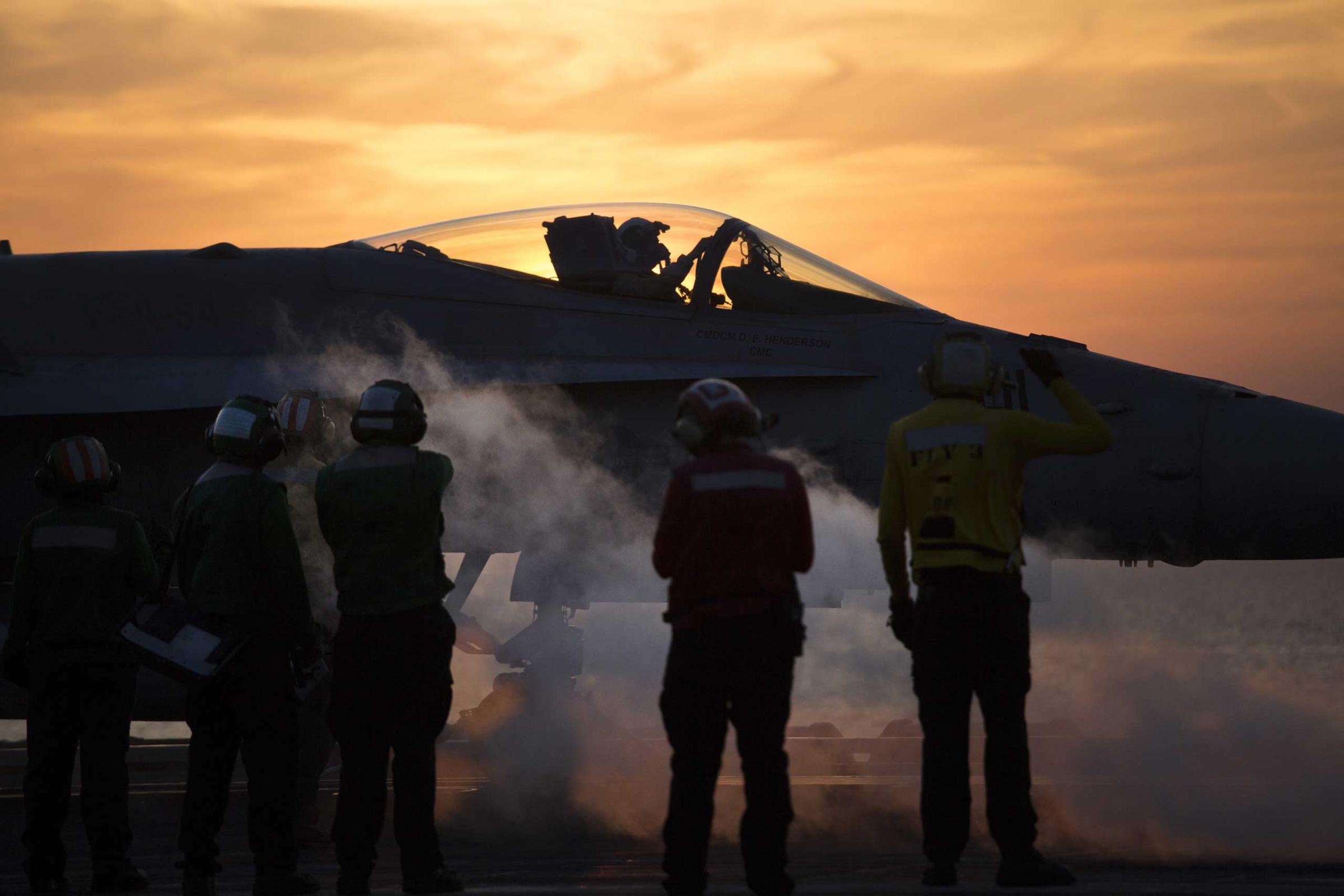
Today’s daily Photojournalism Links collection highlights Tyler Hicks‘ work aboard the USS Carl Vinson aircraft carrier in the Persian Gulf, one of the launch pads of the U.S.-led air campaign against the Islamic State of Iraq and Greater Syria (ISIS). More than a dozen warplanes take off from the carrier every day for missions over Iraq and Syria. The five-acre ship, with a crew of more than 5,000, has long played a role in the U.S.’s fight against terrorism. Some of the first air strikes of the Afghan war in 2001 were made by jets that took off from the Vinson, and it was on that same ship that, in 2011, Navy SEALs brought Osama bin Laden’s body after a raid in Pakistan, and buried it at sea. Hicks’ photographs offer an intriguing look at this massive symbol of American military power in the Middle East.
Tyler Hicks: A Desert War on ISIS, Fought From a Floating City (The New York Times)
Kirsten Luce: Documenting Immigration From Both Sides of the Border (TIME LightBox) Powerful photographs of migrants trying to enter the U.S. and the border patrols trying to catch them.
Robin Hammond: Lagos Portraits (National Geographic) Compelling portraits of Lagosians presented alongside their take on the city.
The Year in Pictures: 2014 (NBC News)
John Stanmeyer (Vogue Italy) Insightful interview with the World Press Photo of the Year 2013 winner.




More Must-Reads from TIME
- Donald Trump Is TIME's 2024 Person of the Year
- TIME’s Top 10 Photos of 2024
- Why Gen Z Is Drinking Less
- The Best Movies About Cooking
- Why Is Anxiety Worse at Night?
- A Head-to-Toe Guide to Treating Dry Skin
- Why Street Cats Are Taking Over Urban Neighborhoods
- Column: Jimmy Carter’s Global Legacy Was Moral Clarity
Contact us at letters@time.com